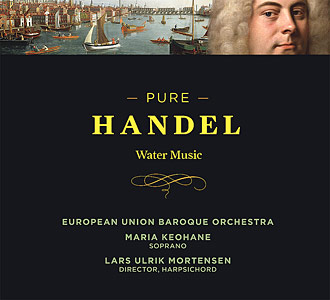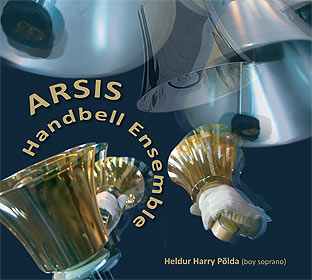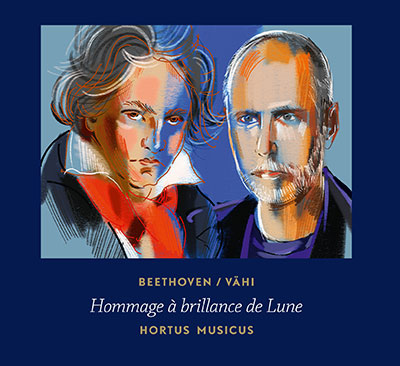
Vertigo
November 10, 2020
De Spe
November 10, 2020ERKKI-SVEN TÜÜR
The only opera by Erkki-Sven Tüür on DVD. Performed by Estonian National Opera. “Mister Wallenberg, my family will fit in your coat pocket. My family will make your fingers dirty, you can scrape them together from Polish fields, tree leaves and the ridges of gable roofs, there is not even so much left of them that you could paint a cross with ashes on your forehead, not even so much that a soldier would start coughing when they fly into his throat.”
Has received the Estonian State Culture Award!
| Opera: Act 1 | 64:52 |
| Opera: Act 2 | 48:51 |
| Backstage story: rehearsals, staging, première performance | 4:22 |
| Photo gallery: authors, performers, performance |
Performers
Wallenberg: Jesper Taube (Royal Swedish Opera)
Eichmann: Priit Volmer
Wallenberg 2: Mati Turi
German Officer: Jassi Zahharov
Ronald Reagan: Väino Puura
1st Survivor: Teele Jõks
2nd Survivor: Andres Köster
3rd Survivor: Mart Laur
1st Guest / Jacob Wallenberg: Mart Madiste
2nd Guest / American general: René Soom
3rd Guest / American soldier: Aare Saal
1st Diplomat: Helen Lokuta
2nd Diplomat: Annaliisa Pillak
3rd Diplomat: Juuli Lill
Dame: Riina Airenne
Woman: Aile Asszonyi
1st Russian Officer: Urmas Põldma
2nd Russian Officer: Vladislav Horuženko
3 GULag’s Prisoners: Villu Valdmaa, Aare Kodasma, Alar Haak
Wallenberg 3: Vahur Agar
Jews, guests, GULag’s prisoners: Estonian National Opera Chorus
Estonian National Opera Symphony Orchestra
Assistant conductor: Risto Joost
Conductor: Arvo Volmer


Libretto (in German): Lutz Hübner
The concept of staging: Dmitri Bertman (Helicon Opera, Moscow)
Stage design, costumes and staging: Ene-Liis Semper
Stage directors: Dmitri Bertman & Neeme Kuningas
Recorded at the Estonian National Opera House in Sep 2007
Sound engineer: Maido Maadik (Estonian Radio)
DVD authoring / video production: Jüri Tallinn
Video director: Nadezhda Feodoridi
Assistant video director: Irina Dotsenko
Cameraman / assistant film producer: Sergey Koryagin
Cameramen: Andrey Krokhalev, Valery Gudkov, Alexey Rybakov, Andrey Ilyukhin, Alexey Koryagin
DVD authoring / mastering: Orbital Vox Studios
Liner notes: Liina Viru
Design: Mart Kivisild
Photos: Harri Rospu, archives of Estonian National Opera, Peeter Vähi
Management: Paul Himma, Heidi Pruuli, Tiina Jokinen
Producer: Peeter Vähi (Estonian Record Productions)


Stereo 2.0 and surround 5.1
Format of screen 16 : 9, PAL, Region All
Subtitles in Estonian, Russian, and English
ERP 1808
Manufactured by Sony DADC, Austria
© 2008 Estonian National Opera & ERP
See also: libretto in Estonian and in English.
“…I felt it was one of the strongest experiences that I have had in any opera house ever. I bought the DVD at the same time and my intention was to review it at once. On second thoughts I decided, however, to let it rest for a while. I simply wanted to see if my strong reactions at the live performance had waned when I returned to the opera, which I did almost exactly two months later. It turned out that the experience was, if possible, even stronger the second time around.” (Göran Forsling, MusicWeb International, whole article)
See also other press resonances about Wallenberg
Watch a fragment of Wallenberg on ![]() YouTube
YouTube
Erkki-Sven Tüür
 In the 80s Erkki-Sven Tüür, a student of Prof Jaan Rääts and Prof Lepo Sumera, finds his way into Estonian music. Physically residing on a small Estonian island of Hiiumaa he creates his work in the global sound space. Music by Tüür today is commissioned by renowned international musicians and is more often than not first performed on the world’s stages. Tüür’s aim is provocative and reckless – to melt into music a “catalogue” of the 20th cent styles. He has composed 5 symphonies (1984, 1987, 1997, 2002, 2004), instrumental concertos, a number of shorter symphonic pieces, an opera, a cycle Architectonics for chamber ensemble. There are undercurrents from the neo-style sources and rock music to sonorism and minimalism in his music. It could be taken for a pure fun of experimentalism. While listening one might perceive Tüür’s sound as if from another world – it is like a reflection of human existential consciuosness – metaphysical desert of soul, lonely battles. In the recent works by Tüür one can sense the passion and tenderness of monologue, neoromantic glimmer, the signs of reconciliation and beauty.
In the 80s Erkki-Sven Tüür, a student of Prof Jaan Rääts and Prof Lepo Sumera, finds his way into Estonian music. Physically residing on a small Estonian island of Hiiumaa he creates his work in the global sound space. Music by Tüür today is commissioned by renowned international musicians and is more often than not first performed on the world’s stages. Tüür’s aim is provocative and reckless – to melt into music a “catalogue” of the 20th cent styles. He has composed 5 symphonies (1984, 1987, 1997, 2002, 2004), instrumental concertos, a number of shorter symphonic pieces, an opera, a cycle Architectonics for chamber ensemble. There are undercurrents from the neo-style sources and rock music to sonorism and minimalism in his music. It could be taken for a pure fun of experimentalism. While listening one might perceive Tüür’s sound as if from another world – it is like a reflection of human existential consciuosness – metaphysical desert of soul, lonely battles. In the recent works by Tüür one can sense the passion and tenderness of monologue, neoromantic glimmer, the signs of reconciliation and beauty.
Download: Erkki-Sven Tüür in May 2000, photo by P Vähi, jpg, 300 dpi, 724 KB
Estonian National Opera
 The Estonian National Opera, established in the year 1906, is a historic organisation with vital traditions and manifold functions.
The Estonian National Opera, established in the year 1906, is a historic organisation with vital traditions and manifold functions.
The EsNO’s season, lasting 10 months from Sep until Jun, contains a varied repertoire of opera, ballet, operetta, musicals and children’ pieces. Around 250 performances of up to 30 different works are presented annually, including the cream of classical opera and operetta as well as contemporary masterpieces. On the top of that, the best works of Estonian origin are also shown on the stage!
The Estonian National Opera is the home of the symphony orchestra, the opera chorus and the ballet. The orchestra was founded in 1907 and it now employs almost a 100 musicians. In addition to its theatre assignments, the orchestra regularly performs symphonic works and records world classics as well as the best of Estonian music. The 54-strong opera chorus, besides participating in stage productions, consistently gives concerts on its own as well. The EsNO employs as many as 25–30 soloists. As a compliment to that, it welcomes guest singers on a regular basis. The EsNO ballet, existing within the framework of the opera company and employing approximately 60 dancers, is the country’s largest ballet troupe. Young choreographers are constantly enriching its repertoire of standard favourites with contemporary pieces and occasional avant-garde projects. In order to stay open to new ideas and fresh approaches, The EsNO always makes space and time in its working schedule for joint projects of multifarious nature, and for individual guest artists. For the latter to bring their unique experience onto our stage; for the Estonian audience, to partake of a different artistic vision.
Symbolically speaking, the EsNO’s location in the heart of Estonia’s capital city, Tallinn, is a reflection of the company’s artistic position – at the centre of Estonian culture.








